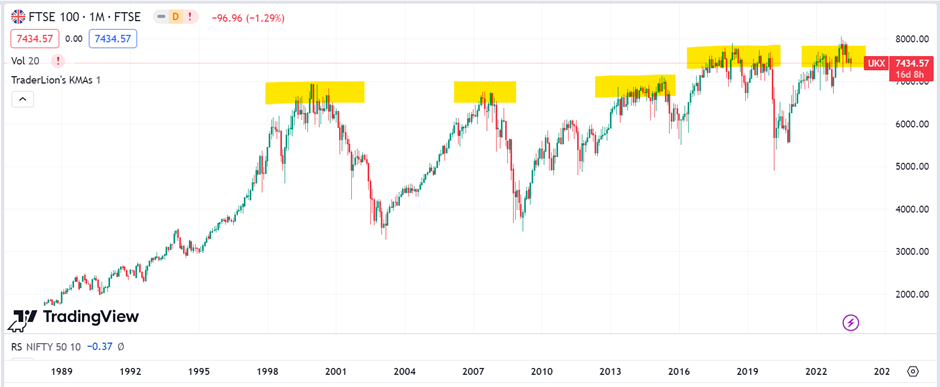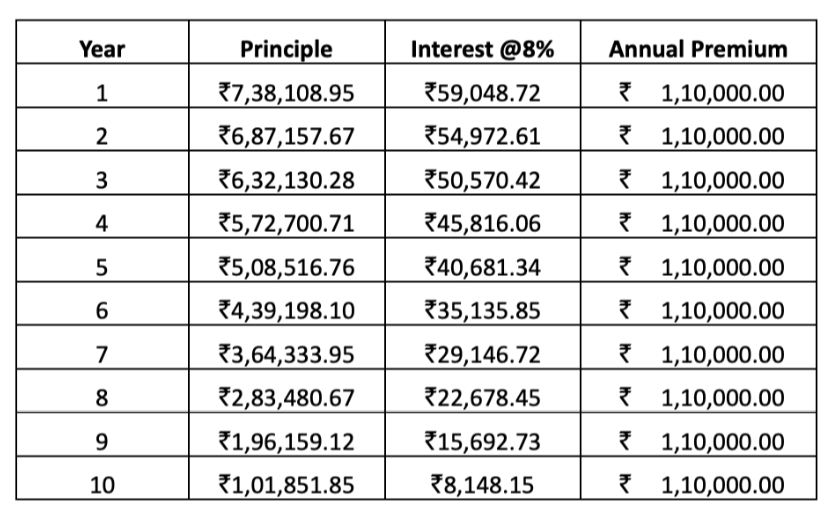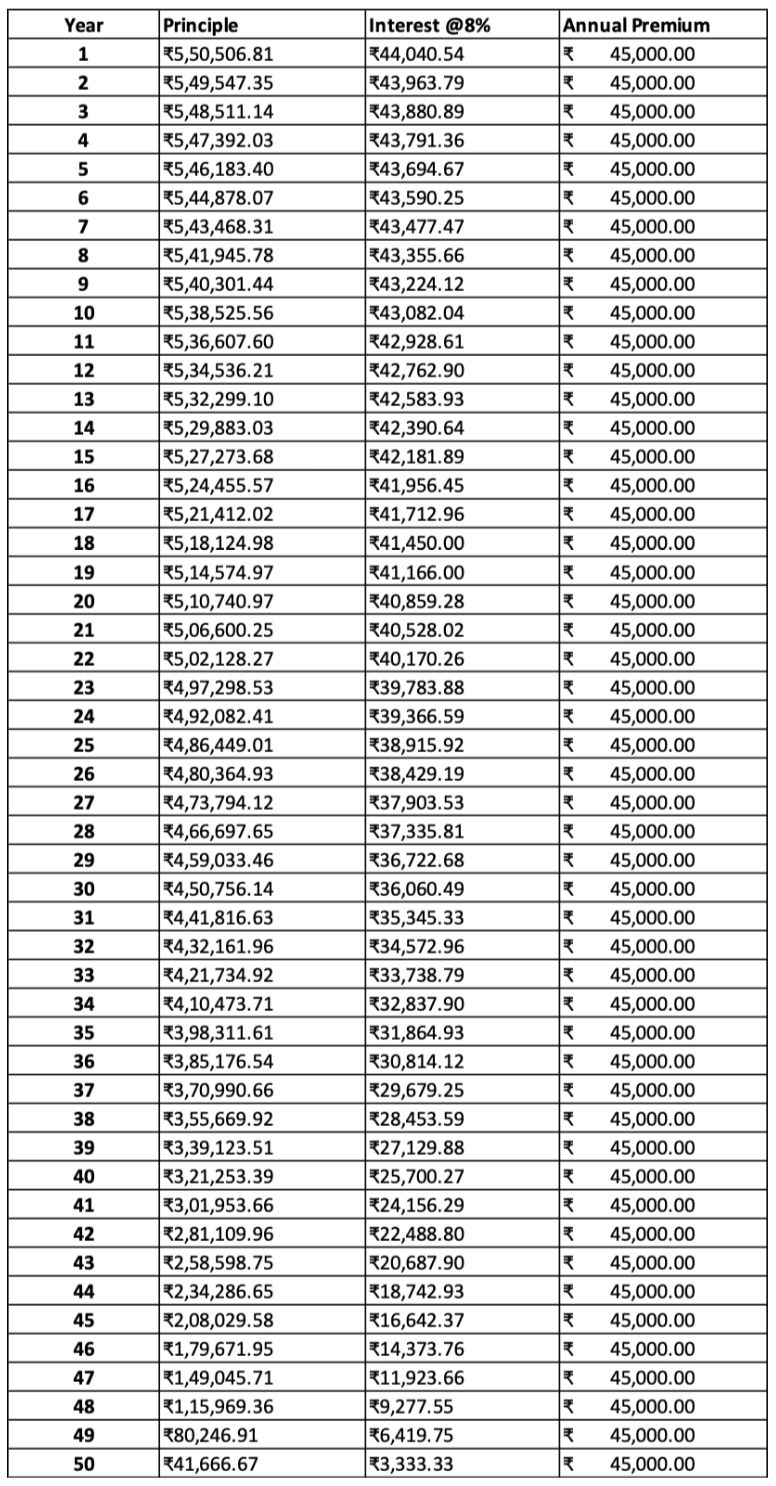


Source: IStockphoto.com
Meet Vignesh, a 35-year-old executive on a mission to secure his family's financial future. Faced with the decision of purchasing a term insurance plan, Vignesh finds himself at a crossroads. He has two options, both offering a sum assured of 2 crores up until the age of 85—one with a premium paying term (PPT) of 10 years and the other stretched over 50 years.
In the first case, the 10-year PPT option demands an annual premium of Rs 1,10,000, summing up to a total outflow of Rs 11 lakhs over the policy's duration. On the flip side, the 50-year PPT option, with its annual premium of Rs 45,000, totals Rs 22.5 lakhs over half a century. At first glance, Vignesh might lean towards the 10-year plan, thinking it's a financially savvy choice— a perspective often shared by many who, in a simple straight-line comparison, conclude that opting for the 10-year PPT is the better option.
However, in his quest for financial prudence, Vignesh overlooks a critical factor—the time value of money. This fundamental financial concept asserts that money today holds more value than money in the future. Ignoring this principle could lead to flawed decision-making.
Let's take a step back and use a bit of imagination to understand the impact of the time value of money. Picture Vignesh setting aside an amount in a Fixed Deposit (FD) today, earning an assumed 8% annual interest to pay off the entire premiums with the FD going to zero at the end of the premium paying term. What would be the respective values of these FDs today?
This can be computed using the Net Present Value (NPV). The respective NPVs (i.e. the FD amount earning 8% to pay off the premiums will be). More on NPV here.
10-Year PPT Option
Premium: Rs 1,10,000 p.a.
NPV (i.e. FD value): Rs 7,38,108.95
50-Year PPT Option
Premium: Rs 45,000 p.a.
NPV (i.e. FD value): Rs 5,50,506.81
The tables below illustrate how the interest amounts plus principle will be used to pay off the annual premiums.


Please review this link for a detailed breakdown of the calculations for better clarity.
Put simply, the 10-year premium option costs us Rs 7.4 lacs approx., and the 50-year premium option costs us Rs 5.5 lacs approx. Put this way, it is obvious that the 50-year premium option should be preferred. As time progresses, the 10-year plan might not seem as cost-effective when compared to the seemingly higher total premium outlay of the 50-year plan.
In the realm of term insurance, the decision goes beyond comparing present-day premiums. The time value of money sheds light on the significance of understanding the future worth of your financial decisions. Vignesh, like many others, discovers that opting for a longer premium payment term may not be as financially burdensome as it appears initially.
In conclusion, when confronted with decisions regarding the tenure of term insurance premium payments, it's crucial to consider the time value of money as your guiding principle. Delve into the calculations, meticulously assess the future worth of your investments, and make decisions that harmonize with your long-term financial well-being.
Remember, choosing the tenure of your term insurance premium involves more than just numbers—it requires a thoughtful consideration of your financial journey. So, embark on this decision-making process with a seasoned mindset, ensuring your choices stand the test of time.
Disclaimer: The data/information compilation in this article is the Author’s comment on general trends in the securities market and discussions of broad-based indices. The information/data provided here is not a research report as defined under the Securities and Exchange Board of India (Research Analysts) Regulations, 2014 (SEBI RA Regulation, 2014). Thus, the Author is not required to have registration as a Research Analyst under the SEBI RA Regulation, 2014.
The information/data provided in this article is from publicly available data, and appropriate references have been given, which we believe are reliable. While reasonable endeavours have been made to present reliable data related to current and historical information, the Author does not guarantee the accuracy or completeness of the data/ information in this article. Accordingly, the Author or any of his connected persons, including his associates or employees, shall not be in any way responsible for any loss or damage that may arise to any person from any inadvertent error in the information/data contained, views and opinions expressed in this article.
The information/data provided in the article is purely for information purposes and to disseminate knowledge on the general trends in the securities market. The same does not constitute investment recommendation/advice or an offer or solicitation of an offer to buy/sell any securities.
No person should rely solely on the information/data in this article and must make investment decisions based on their own investment objectives, judgment, risk profile and financial position. The recipients of the article may take necessary professional advice before acting on it.
Investment in securities market are subject to market risks. Read all the related documents carefully before investing.